Hannahhaifisch - HH

More Posts from Hannahhaifisch and Others
demonstration of quantum trapping
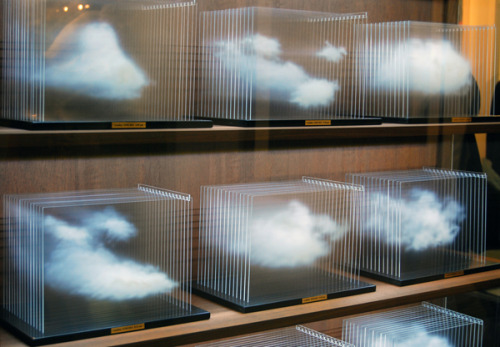
La Vitrina Cloud Collection - Leandro Erlich (2011)
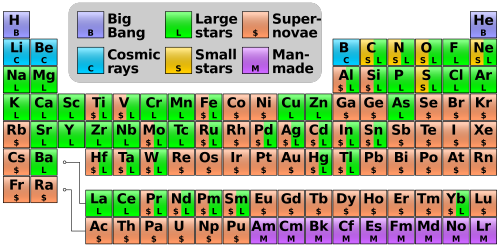
Where Your Elements Came From
The hydrogen in your body, present in every molecule of water, came from the Big Bang. There are no other appreciable sources of hydrogen in the universe. The carbon in your body was made by nuclear fusion in the interior of stars, as was the oxygen. Much of the iron in your body was made during supernovas of stars that occurred long ago and far away. The gold in your jewelry was likely made from neutron stars during collisions that may have been visible as short-duration gamma-ray bursts. Elements like phosphorus and copper are present in our bodies in only small amounts but are essential to the functioning of all known life. The featured periodic table is color coded to indicate humanity’s best guess as to the nuclear origin of all known elements. The sites of nuclear creation of some elements, such as copper, are not really well known and are continuing topics of observational and computational research.
Image Credit: Cmglee (Own work) CC BY-SA 3.0 or GFDL, via Wikimedia Commons

For the first time, scientists have subjected quantum entanglement to extreme levels of acceleration, and there’s nothing fragile about this “spooky action at a distance”- it’s way more robust than we thought.
In recent experiments, entangled particles held firm even while being accelerated to 30g - 30 times Earth’s acceleration - and the results could have a big impact on our search for a unified theory of modern physics.
“These experiments shall help [us] unify the theories of quantum mechanics and relativity,” says one of the team, Rupert Ursin, from the University of Vienna, Austria.
Continue Reading.

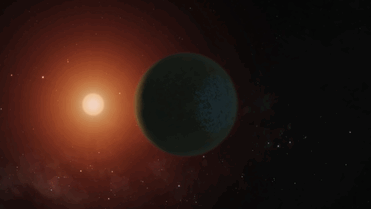
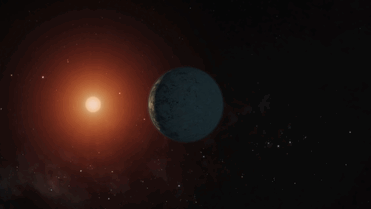
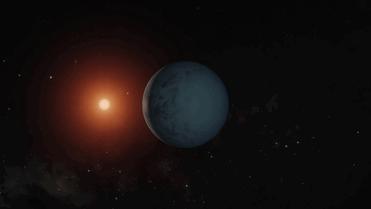


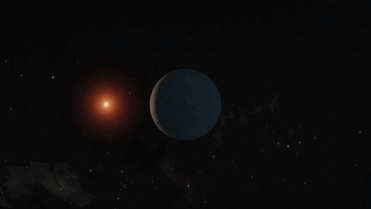
TRAPPIST-1 Planets - Flyaround Animation
Credit: NASA/Spitzer

69.6027062, -25.5389832

A method to engineer crystals with a large fraction of reactive facets
Versatile superstructures composed of nanoparticles have recently been prepared using various disassembly methods. However, little information is known on how the structural disassembly influences the catalytic performance of the materials. Scientia Professor Rose Amal, Vice-Chancellor’s Research Fellow Hamid Arandiyan and a group from the Particles and Catalysis Research Group from the University of New South Wales (UNSW) School of Chemical Engineering have had their research address this issue published in Nature Communications.
The research team led by Dr Jason Scott and Prof Sean Smith in collaboration with Curtin University and Beijing University of Technology has developed a method that allows them to engineer crystals with a large fraction of reactive facets. An ordered mesostructured La0.6Sr0.4MnO3 (LSMO) perovskite catalyst was disassembled using a unique fragmentation strategy, whereby the newly-exposed (001) reactive faces at each fracture were more reactive towards methane oxidation than the regular (i.e. before disassembly)
It is of significant interest to use methane as an alternative fuel to coal and oil due to its high hydrogen to carbon ratio which provides comparatively lower greenhouse gas emissions. Commercial catalysts for methane combustion contain precious metals (e.g. Pt and Pd) which are of high cost and poor thermal stability (caused by agglomeration of the metal deposits). Using perovskite-type catalysts to replace noble metal supported catalysts for methane oxidation has attracted recent attention due to their excellent thermal stability. In their recently published article, the research team describes a simple fragmentation method to synthesise a novel three-dimensional hexapod mesostructured LSMO perovskite.
Read more.
Im Rahmen des TV Pop-Ups haben Gert-Jan Akerboom und Hannah Reber eine multimediale Installation gebaut. Der Bauplan wird von Gert-Jan Akerboom als Kunstwerk im Rahmen der CGG Berlin aus- und zur Verfügung gestellt. Viel Spaß beim Bauen! :*
more infos? ask presse@cgg-berlin.de










Interlocked Coins Form Complex Geometric Sculptures
-
 dawn1x liked this · 4 years ago
dawn1x liked this · 4 years ago -
 gregpeekatchoo liked this · 4 years ago
gregpeekatchoo liked this · 4 years ago -
 homelessly liked this · 4 years ago
homelessly liked this · 4 years ago -
 pachucowildcat liked this · 4 years ago
pachucowildcat liked this · 4 years ago -
 hush1311 liked this · 4 years ago
hush1311 liked this · 4 years ago -
 grptoast liked this · 4 years ago
grptoast liked this · 4 years ago -
 billanddansblog reblogged this · 4 years ago
billanddansblog reblogged this · 4 years ago -
 9-wing-1 reblogged this · 4 years ago
9-wing-1 reblogged this · 4 years ago -
 steviedegrae liked this · 4 years ago
steviedegrae liked this · 4 years ago -
 niftyandinterestingstuff reblogged this · 4 years ago
niftyandinterestingstuff reblogged this · 4 years ago -
 niftyandinterestingstuff liked this · 4 years ago
niftyandinterestingstuff liked this · 4 years ago -
 troyminos reblogged this · 4 years ago
troyminos reblogged this · 4 years ago -
 troyminos liked this · 4 years ago
troyminos liked this · 4 years ago -
 favoritesarchives-v1crono reblogged this · 6 years ago
favoritesarchives-v1crono reblogged this · 6 years ago -
 grnchickenpox liked this · 7 years ago
grnchickenpox liked this · 7 years ago -
 joyfulstrangerhere liked this · 7 years ago
joyfulstrangerhere liked this · 7 years ago -
 femme-tobe reblogged this · 7 years ago
femme-tobe reblogged this · 7 years ago -
 abdullahruqaishi liked this · 7 years ago
abdullahruqaishi liked this · 7 years ago -
 eldorania liked this · 7 years ago
eldorania liked this · 7 years ago -
 sagumarus liked this · 7 years ago
sagumarus liked this · 7 years ago -
 fr01ty liked this · 7 years ago
fr01ty liked this · 7 years ago -
 nezumineref liked this · 7 years ago
nezumineref liked this · 7 years ago -
 spooky-mcfly liked this · 7 years ago
spooky-mcfly liked this · 7 years ago -
 robot697 liked this · 7 years ago
robot697 liked this · 7 years ago -
 moldypearsauce liked this · 7 years ago
moldypearsauce liked this · 7 years ago -
 vereloj liked this · 7 years ago
vereloj liked this · 7 years ago -
 greenwater-witch liked this · 7 years ago
greenwater-witch liked this · 7 years ago -
 aksinwarrior liked this · 7 years ago
aksinwarrior liked this · 7 years ago -
 tl-c-sugarskulls liked this · 7 years ago
tl-c-sugarskulls liked this · 7 years ago -
 cowboykoschei reblogged this · 7 years ago
cowboykoschei reblogged this · 7 years ago -
 goodwinterrr liked this · 7 years ago
goodwinterrr liked this · 7 years ago -
 boringbeehive liked this · 7 years ago
boringbeehive liked this · 7 years ago -
 moony1347-blog liked this · 7 years ago
moony1347-blog liked this · 7 years ago -
 saucy-kamikaze liked this · 7 years ago
saucy-kamikaze liked this · 7 years ago -
 gpaw76 liked this · 7 years ago
gpaw76 liked this · 7 years ago -
 gpaw76 reblogged this · 7 years ago
gpaw76 reblogged this · 7 years ago -
 hannahhaifisch reblogged this · 7 years ago
hannahhaifisch reblogged this · 7 years ago -
 hannahhaifisch reblogged this · 7 years ago
hannahhaifisch reblogged this · 7 years ago -
 hannahhaifisch liked this · 7 years ago
hannahhaifisch liked this · 7 years ago